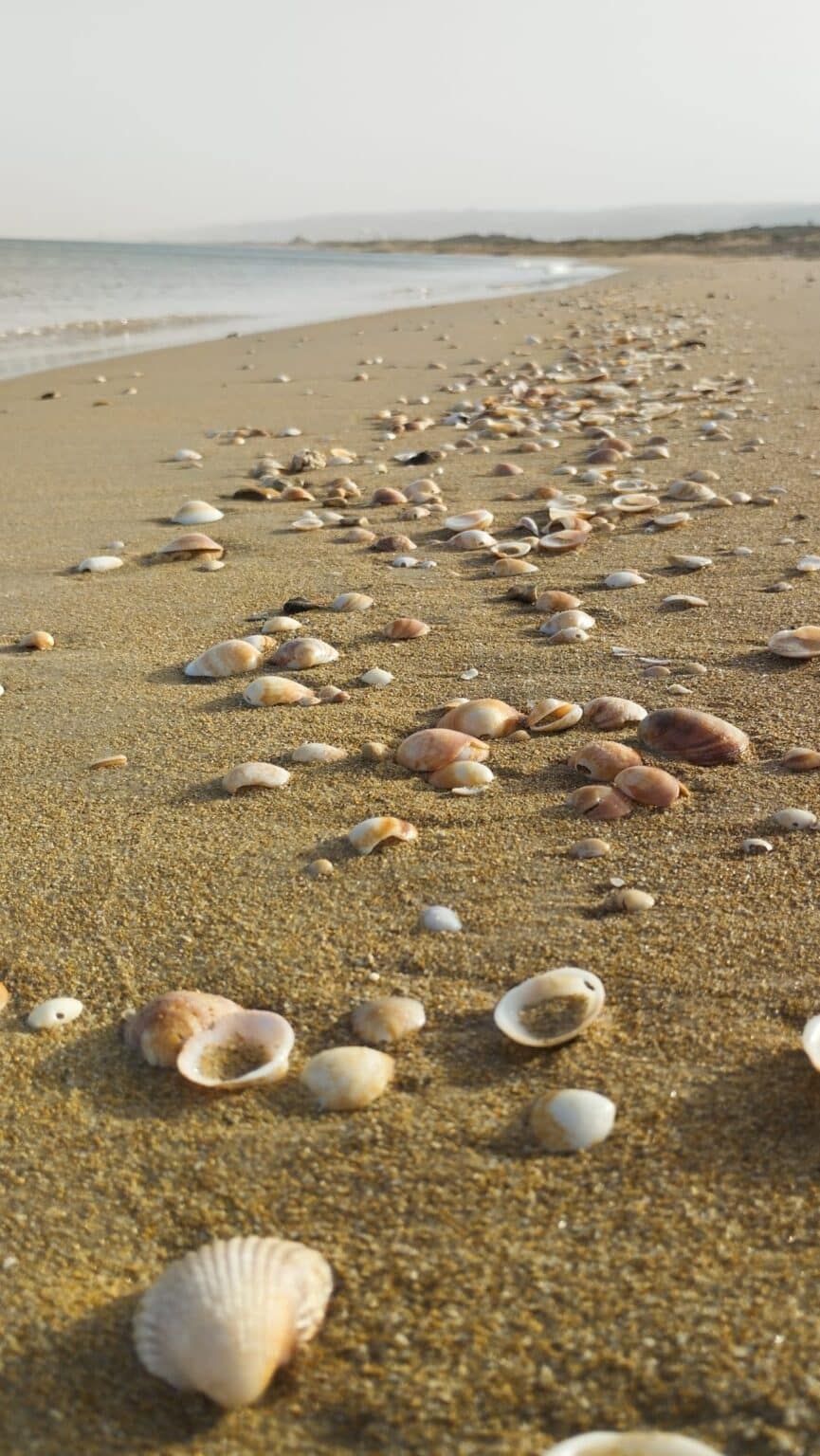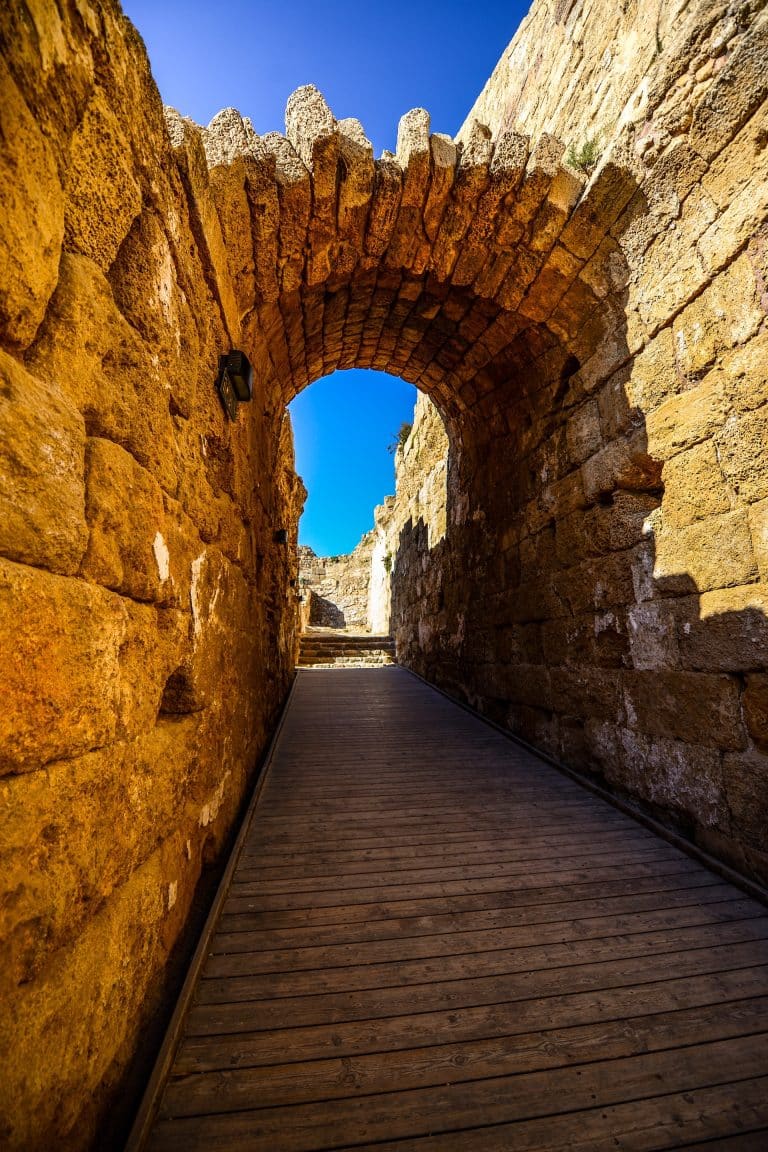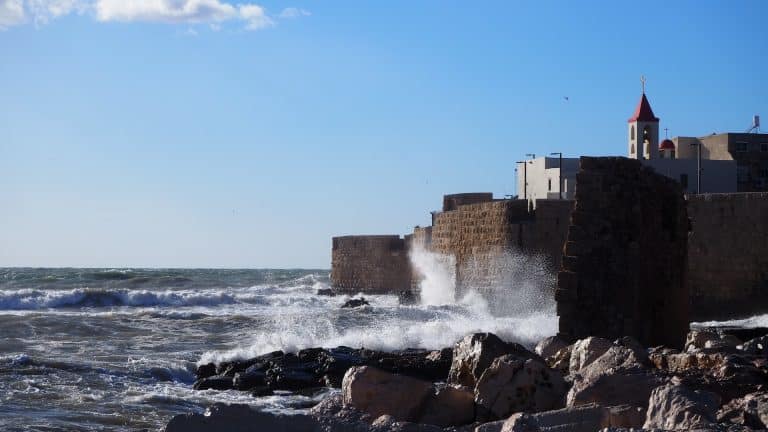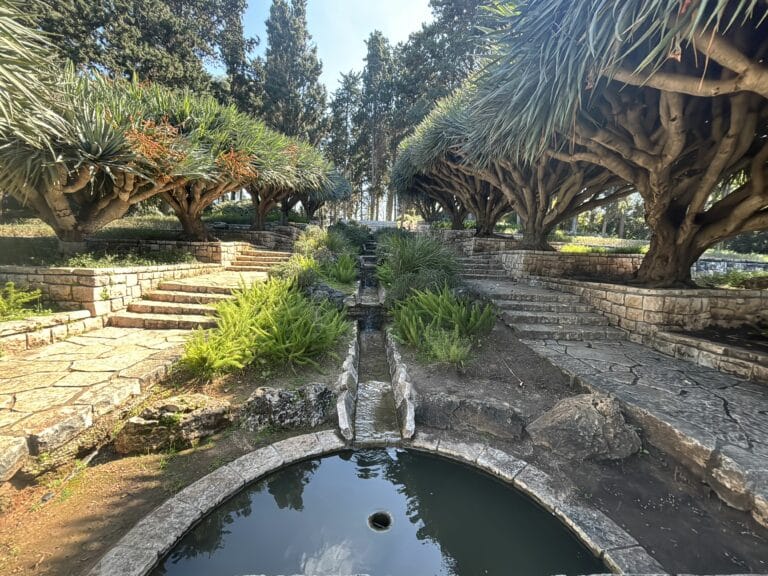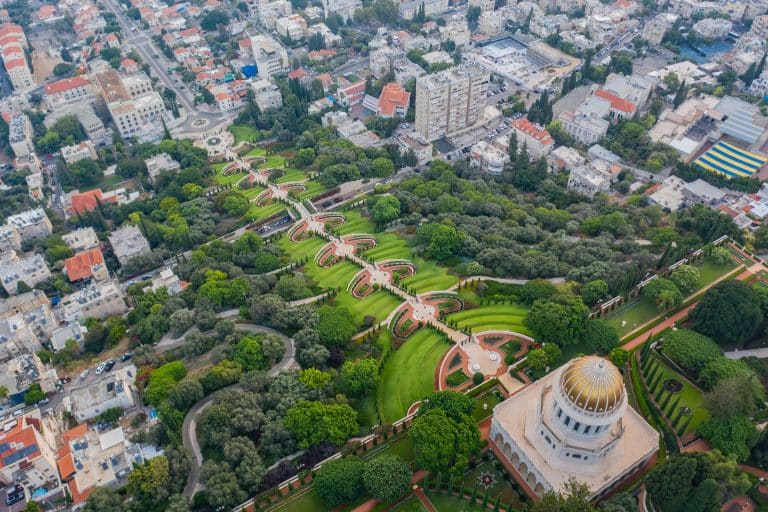Atlit, located along the Mediterranean coast, just south of Haifa, is a great low-key destination, offering a variety of great places to visit, especially for history and nature lovers. Those make it an ideal stopover for everyone who is looking for a great place to visit away from the crowds, as Atlit will give you the ultimate local experience.
The History of Atlit
Atlit in ancient times
The earliest sign of life in the Atlit area is found at a site known as the “Neolithic village of Atlit Yam” which is below sea level, about 400 meters/1,312 feet into the sea. The site dates to the end of the Pre-Ceramic Neolithic Period III, at the end of the 7th millennium BC. Buildings, wells, ritual structures, organic remains of humans and animals, and material artifacts of stone were found on the site. To this day, it is not clear why the site was abandoned, as most believe that it was ruined by seawater.
During the Iron Period, there was a Phoenician port town here, that was built around the 6th century BC, and played a major role in the trading between the land of Israel and nearby kingdoms. The town existed here in Atlit until the end of the Hellenistic period in 63 when it was destroyed and abandoned.
The peak time of Atlit took place in the Crusader period when two major forts were built here: Chateau Pelerin and Le Destroit. However, when the Crusaders fell to the Mamluks in 1291, Atlit was abandoned.
The modern town of Atlit
The modern Atil was established in 1901 when the lands in the area were purchased by Edmond James de Rothschild. At first, the establishment of Atlit took great effort, as the area was covered in swamps that served as breeding grounds for mosquitoes. The yellow malaria disease, carried by mosquitoes, attacked the first settlers, who suffered from severe illnesses.
Since then, Atlit has been gradually developing, with an economy that is mostly based on industry and agriculture. Today, there are 11,000 residents in the town, as well as a major army base, which is home to the Marines squad of the IDF.
Best places to visit in Atlit
Immigration Camp Atlit Museum
The Immigration Camp at Atlit is a national site documenting the Zionist immigration, labeled as illegal immigration, to the Land of Israel by sea, air, and land during the British Mandate period of 1919-1948. A visit to this captivating museum is a great opportunity to learn about this fascinating part of history.
The camp was originally built as a prison, established by the British in 1939. Between 1940-1948, the place was used as a detention camp for illegal immigrants, and tens of thousands of Jews were imprisoned there during these years, even though a large part of them were Holocaust survivors, who had just left the ghettos and concentration camps in Europe.
The camp was a major source of conflict, and On October 10, 1945, a drama unfolded in the detention camp, when the Palmach, the elite fighting squad of the Zionist movement, broke into the camp and succeeded in its mission to forcefully release all of the camp’s prisoners. However, the British continued to use the place and the camp eventually filled up again.
The camp was declared a national site in 1985 and was opened to the public in 1987, as a site for the heritage of immigration to Israel at this time.
The camp has been restored in such a way as to remind the living conditions that were there in the 1940s and includes a display of items from that period – including the wooden barracks, British armor, and watchtowers. In addition, it features a comprehensive documentation of testimonies, photographs, and documents related to the illegal immigration to Israel in those years.
Operating hours:
Sunday-Thursday: 9:00-17:00
Friday: 9:00-13:00
Entrance fee:
Adults: 33 ILS
Kids: 28 ILS
Neve Yam Beach
Neve Yam Beach is on the western side of Kibbutz Neve Yam next to Atlit and is one of the most beautiful beaches in the area. It is a spectacular coastal strip, with clear and beautiful water lagoons.
Neve Yam Beach can be divided into two parts, as both are definitely worth a visit. The southern part is a clean and tidy stretch of beach with lifeguard services, showers and toilets, a restaurant, and a parking lot. Entrance to Beach is free of charge. This is also one of the most accessible beaches in Israel, with easy access for wheelchairs.
The other, undeclared beach of Neve Yam is located in the northern part of Neve Yam Beach and adjacent to the water park of Kibbutz Neve Yam. At this beach, you will find a clear lagoon surrounded by rocks, which create a beautiful wading pool. It’s a great place to visit at sunset and watch the impressive sight of the powerful sea water crashing against the rocks. However, it’s important to note that there are no lifeguard services on this beach. Entrance to this stretch of beach is also free of charge.
Ein Hod Artist Village
Ein Hod, located just east of Atlit, is a unique artist village, which was established in order to build a community of artists together and create a supportive and creative environment in one small town. And so, from 1953 when the village was founded until today, artists from all fields live in this charming village, including musicians, painters, actors, writers, and more.
Today Ein Hod is a beautiful touristic village where you can go on a fascinating trip in a peaceful, creative atmosphere. During your visit here, you can walk through picturesque alleys, and enjoy the various galleries and a variety of sculptures and works of art that are scattered in the village. In addition, there are unique attractions here that are suitable for a variety of ages, a selection of recommended restaurants, and also popular accommodation options, with great views of Mount Carmel and the sea.
During a visit to Ein Hod, you can go on tours with some of the inspiring characters of the village or participate in various creative workshops. The village features a dramatized theatrical tour, as well as other tours will take you to the beautiful village and tell you the story of the place. Among the workshops held in Ein Hod, you will find pottery workshops, sewing workshops, photography workshops, music workshops, and more.

